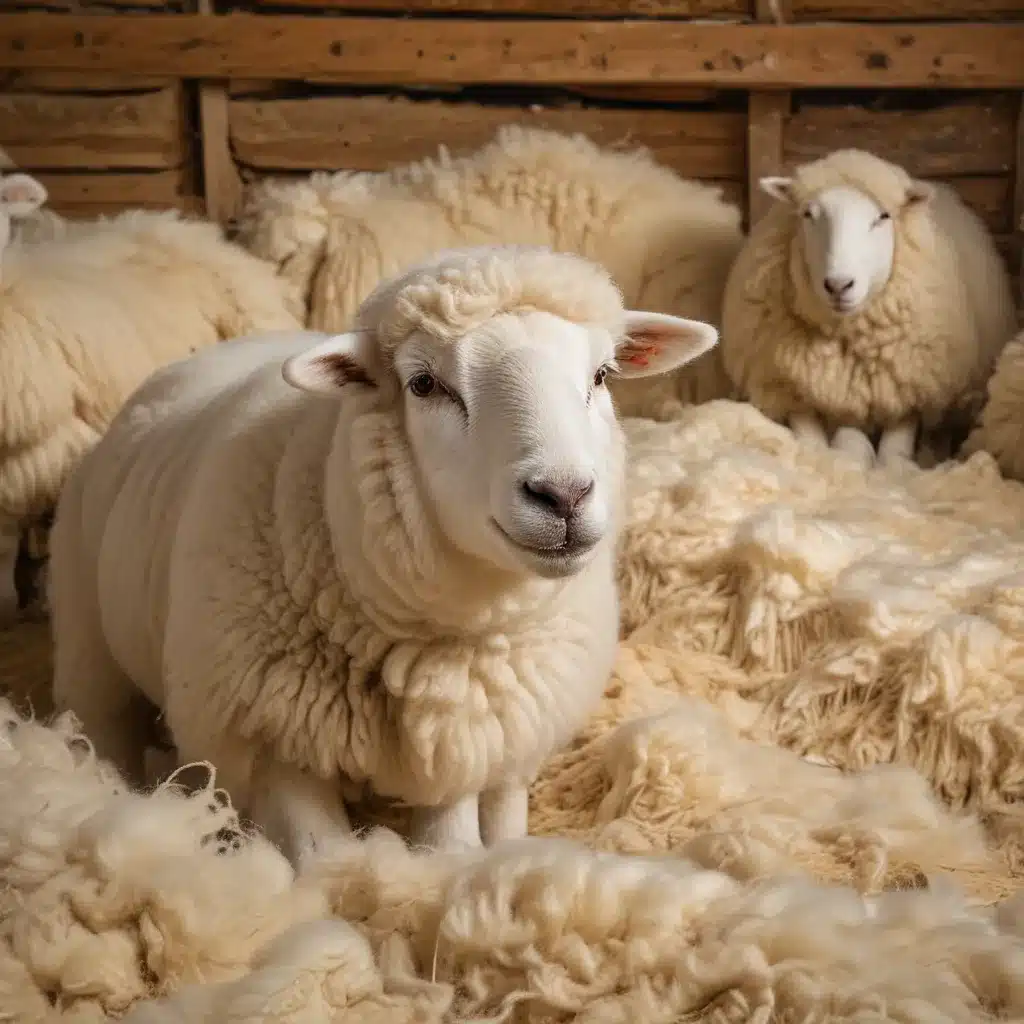
Using Natural Insulation Like Sheeps Wool For Warmth
If you’ve ever wondered how sheep manage to survive the bitter cold winters here in Aberdeen, the answer just might surprise you. It’s all about the incredible insulating properties of their wool. And as it turns out, we humans can take advantage of this natural wonder too when it comes to keeping our homes nice and toasty.
As a self-proclaimed “mud builder” and author of the book Mud Ball, I’ve spent years experimenting with natural insulation materials, and sheep’s wool has consistently proven to be one of the most effective. In fact, I’m willing to bet that if you took a stroll through the rolling hills just outside of town, you’d find more than a few local homeowners who have harnessed the power of this fluffy fiber to keep the chill at bay.
But don’t just take my word for it. Let’s dive into the science behind why sheep’s wool makes such an excellent insulator, and explore how you can incorporate it into your own home renovation or building project. Trust me, after learning about all the benefits, you’ll be baa-ing with excitement to get started.
The Insulating Superpowers of Sheep’s Wool
So what is it about sheep’s wool that makes it so darn good at keeping us warm? Well, it all comes down to the unique structure of the fibers. Each individual wool strand is composed of overlapping scales that create tiny pockets of air. This air acts as a highly effective barrier, trapping heat and preventing it from escaping.
According to research, sheep’s wool can maintain up to 80% of its insulating ability even when it’s wet. This is a huge advantage over synthetic insulation materials, which tend to lose their effectiveness when exposed to moisture. And let’s be honest, with the amount of rain we get here in Aberdeen, that’s a pretty important consideration.
But the benefits don’t stop there. Sheep’s wool is also naturally fire-resistant, thanks to its high nitrogen and water content. So not only will it keep your home toasty, but it’ll give you an extra layer of protection against those pesky flames. And as an added bonus, it’s biodegradable and environmentally friendly – a far cry from the petroleum-based alternatives.
Putting Sheep’s Wool to Work in Your Home
Now that we’ve established just how amazing sheep’s wool is as an insulator, you’re probably wondering how you can actually put it to use in your home. Well, the good news is that there are a variety of ways to incorporate it, depending on the project you have in mind.
One popular option is to use it as loose-fill insulation in your attic or walls. According to building codes, the recommended R-value (a measure of insulation’s thermal resistance) for attics in this part of the UK is around R-49, which sheep’s wool can easily achieve. And the best part? It’s a breeze to install – just grab a bag and start pouring!
Alternatively, you could opt for sheep’s wool insulation batts or panels, which are perfect for more targeted areas like exterior walls or between floor joists. These pre-made products are designed to fit snugly into standard framing, making them a super easy DIY solution. Plus, they often come with a handy vapor barrier to prevent moisture buildup.
And let’s not forget about those cozy nooks and crannies. For small spaces like around windows, doors, or electrical outlets, you can use sheep’s wool in the form of loose-fill or even hand-packed insulation. This will help plug any pesky air leaks and keep the drafts at bay.
The Mud Home Guide to Natural Insulation
Of course, sheep’s wool isn’t the only natural insulation material out there. As I mentioned, I’m a big fan of experimenting with all sorts of eco-friendly options, and I’ve learned a thing or two along the way.
According to The Mud Home, some other great choices include straw, cotton, and even hemp. Each one has its own unique properties and benefits, so it’s worth doing a little research to see which one might be the best fit for your project.
For example, straw is an excellent insulator and is incredibly affordable, making it a popular choice for those on a budget. Cotton, on the other hand, is highly effective at blocking sound, which can be a real lifesaver if you live in a noisy neighborhood. And hemp? Well, let’s just say it’s the ultimate multitasker – it’s fire-resistant, pest-proof, and even helps to regulate humidity.
The key is to really understand the needs of your specific project and then match that with the right insulation material. It might take a bit of trial and error, but trust me, the end result will be worth it. After all, what could be better than a cozy, energy-efficient home that’s kind to the environment?
Bringing it All Together
So there you have it, folks – the lowdown on why sheep’s wool is the ultimate insulation superhero. From its incredible thermal properties to its eco-friendly credentials, it’s no wonder it’s been a go-to choice for savvy homeowners here in Aberdeen for years.
And the best part? It’s not just limited to sheep – there are all sorts of natural insulation materials out there that can help keep your home nice and toasty, all while reducing your environmental impact. So why not give it a try? ABC Home would be more than happy to help you explore your options and get the ball rolling on your next renovation or building project.
Who knows, you might just end up baa-king with joy at how cozy and comfortable your new space becomes. After all, when it comes to keeping the chill at bay, sometimes the answer is as simple as looking to nature for inspiration.

















